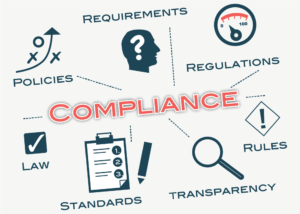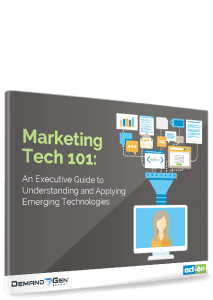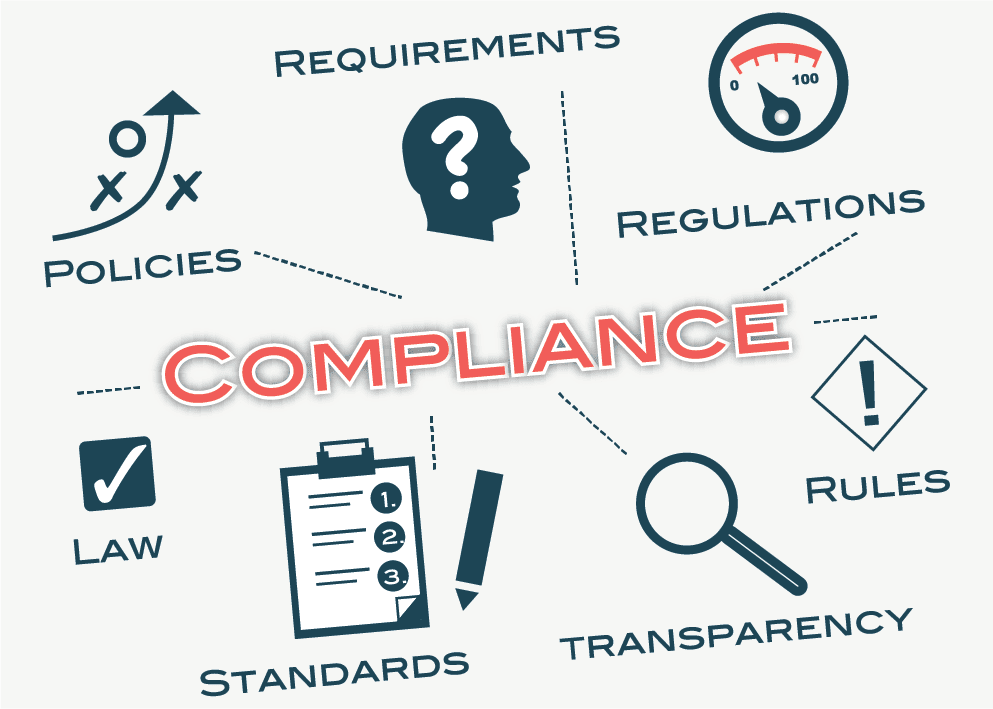 Marketing is an ever-evolving combination of science and art, made more complex by the introduction of social media. This is especially true in the arena of highly regulated industries – verticals like pharmaceuticals, alcohol and tobacco, public companies, and finance each present unique challenges to developing successful marketing campaigns. But knowing the rules can keep you ahead of the game, and help you venture into new marketing areas in these strict fields.
Marketing is an ever-evolving combination of science and art, made more complex by the introduction of social media. This is especially true in the arena of highly regulated industries – verticals like pharmaceuticals, alcohol and tobacco, public companies, and finance each present unique challenges to developing successful marketing campaigns. But knowing the rules can keep you ahead of the game, and help you venture into new marketing areas in these strict fields.
Pharmaceuticals
Four years in the trenches of the wild world of pharma marketing have given me a unique look into the peculiar world of FDA restrictions, uncertain product, and volatile brand ambassadors. With recent regulations, the Affordable Care Act, and political hot buttons the pharmaceutical industry has produced lately, it seems like the world has a finger on the pulse of this ever-changing field, but few actually understand the eccentricities of working within its parameters. So what do you have to look forward to when developing marketing strategies for pharmaceuticals?
- Restrictive regulations: Due to several factors, including the sensitive nature of the product they provide, pharmaceutical companies are strictly monitored by the US government in what they can say and when they can say it. In fact, 20% of pharma marketers find the extremely restrictive regulations to be the most challenging part of their jobs. Further, these restrictions are fraught with legalese and are often hundreds of pages in length – for example, a small part of the Code of Federal Regulations (Title 21, Chapter 1, part 99, to be exact) details the specific rule that pharmaceuticals cannot be marketed by name until they have been approved for marketing by the FDA.
- Uncertain product: Marketers working to launch new products want to have their campaign hit the media channels as soon as possible, so they develop those go-to-market plans concurrently with the product marketers (or scientists) developing the new product. Pharma marketers work the same way, but: imagine developing a comprehensive marketing plan, investing thousands or millions of dollars, only to have the whole thing scrapped when, at the final step of the approval process, the product doesn’t quite meet FDA regulations. Or when Phase III trials reveal an unsavory side effect that tanks the product. Suddenly, the project you’ve been building for months is gone, with no hope for redemption. It’s devastating – yet all too common in the pharmaceutical world. Whether you’re a marketing agency serving this industry or you’re in-house, this is best taken on a case-by-case basis: depending on the specific situation, this may be a blip on the radar, or it may sink the company. In this industry, sometimes your only choice is to put your head down and weather the storm.
- Brand ambassadors and the pitfalls of social media: Earlier this year, Kim Kardashian caused an uproar in the pharma community. Not for precariously balancing a wine glass on the cover of an indie magazine, not for a shocking outfit at a public gala, but for an Instagram post about a morning sickness drug. That’s right – a simple 150 characters singing the praises of Diclegis landed both Kim Kardashian and drug manufacturer Duchesnay in hot water with the FDA. But why? Quite simply, because Kim had failed to mention potential side effects, adverse events, full product indications, or the other required extensive legal language in her 150-character shout out.
 However, brand ambassadors have become an integral part of social media marketing, using hashtags and well-cultivated followers to verify the quality of the products they endorse. Brand ambassadors are their own entities, fully independent and in control of the content they produce. So how can pharma get in on the rising tide of brand ambassadors while handling the strict FDA regulations? Depending on the company, responses vary – many companies avoid brand ambassadors altogether, but more and more companies are adopting the practice and building potential FDA fines into their marketing budgets.
However, brand ambassadors have become an integral part of social media marketing, using hashtags and well-cultivated followers to verify the quality of the products they endorse. Brand ambassadors are their own entities, fully independent and in control of the content they produce. So how can pharma get in on the rising tide of brand ambassadors while handling the strict FDA regulations? Depending on the company, responses vary – many companies avoid brand ambassadors altogether, but more and more companies are adopting the practice and building potential FDA fines into their marketing budgets.
In the end, social trends and conversation around the disease being treated play a big part in determining which drugs can work with consumer endorsement and which must follow more traditional lines of marketing.
Alcohol and Tobacco
Kids growing up in the 90s revel in shared experiences: Teenage Mutant Ninja Turtles, trading cards, and perhaps the less fondly remembered crackdown on the tobacco industry’s marketing campaigns. A movement that began in the 1930s moved to replace cartoon camels with heavy-fonted Surgeon General warnings, culminating in the Family Smoking Prevention and Tobacco Control Act of 2010. The law effectively removed tobacco marketing from music venues, product placement slots, sponsorships, and cultural events.
Alcohol marketing, at least in the US, has gone a slightly different route. Unlike the epic battle of government vs. tobacco giants, alcohol manufacturers have developed a set of voluntary advertising and marketing codes. The Beer Institute, Distilled Spirits Council of the United States (DISCUS), and Wine Institute invite the FTC to periodically review their self-developed codes to ensure compliance within the industry. The codes seek to eliminate the possibility of children being inadvertently targeted by their ads. However, this approach has led to some very specific challenges:
- Social media: Alcohol advertising is highly restricted on social media, due in large part to the sheer numbers of users under the age of 21. Channels such as Facebook have the ability to provide marketers with users’ ages, but not so with Instagram, a photo-based channel rising in marketing popularity. Marketers have found a way to address this challenge: because the average age of Instagrammers is rising, Instagram now has 70% of users over the age of 21 – the magic demographic threshold deemed passable by the alcohol marketing codes. Marketers address any remaining issues by including a variation of the “please drink responsibly” phrase to their consumer-facing content, including web pages and Instagram bios.
- Gender-specific audiences: In a world blossoming into a new era of gender equality, some industries still play to more traditional stereotypes in their marketing. Specifically, female- and male-specific alcoholic beverages split the market into gender-targeted advertising opportunities. You can take advantage of this by identifying gender-specific channels: for example, the ratio of women to men on Pinterest is 2:1. Identify your target audience, then use the statistics to choose your most advantageous channel.
- Sponsorship prizes: Unlike many industries, the alcohol industry cannot gift their product through sponsorships, competitions, or promotions. So how can you make your presence known in the industry known? Marketers have used mixing kits, branded glasses, and recipe books to promote their brand without breaking the rules, and are often quite successful in their efforts.
- International regulations: Outside the US, alcohol marketing challenges are unique to the countries in which they’re regulated: the World Health Organization developed a Framework for Alcohol Policy for the Region, specifically regulating advertising in the European region. Countries like France, Norway, Russia, Ukraine, India, Myanmar, Sri Lanka, and Kenya have taken the regulation a step further and banned all alcohol-related advertising in an attempt to eliminate the risk of inadvertent advertising to children. So, how do you launch successful international campaigns? It’s important to know the regulations going in, so you don’t spend unnecessary time or money on tactics that don’t meet regulation.
 Pharmaceuticals and the alcohol/tobacco industries present unique challenges in marketing, but knowing these challenges can open doors to innovation in the field. The use of technology and marketing automation can help you automate and streamline marketing, saving time in even these highly regulated industries. Take a look at Act-On’s guide Marketing Technology 101 to help you navigate the marketing technology landscape so you can make better decisions how to plan your technology investments.
Pharmaceuticals and the alcohol/tobacco industries present unique challenges in marketing, but knowing these challenges can open doors to innovation in the field. The use of technology and marketing automation can help you automate and streamline marketing, saving time in even these highly regulated industries. Take a look at Act-On’s guide Marketing Technology 101 to help you navigate the marketing technology landscape so you can make better decisions how to plan your technology investments.
What challenges do finance and public companies present, and how can you overcome them? Stay tuned for Marketing Challenges in Regulated Industries Part 2, Finance and Public Companies.
